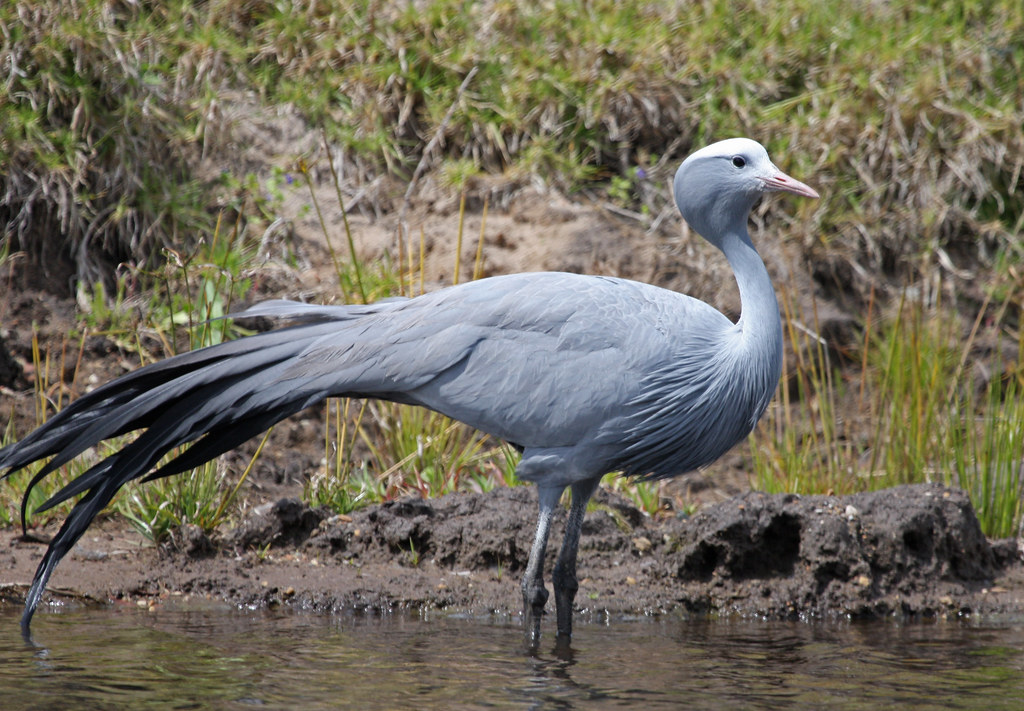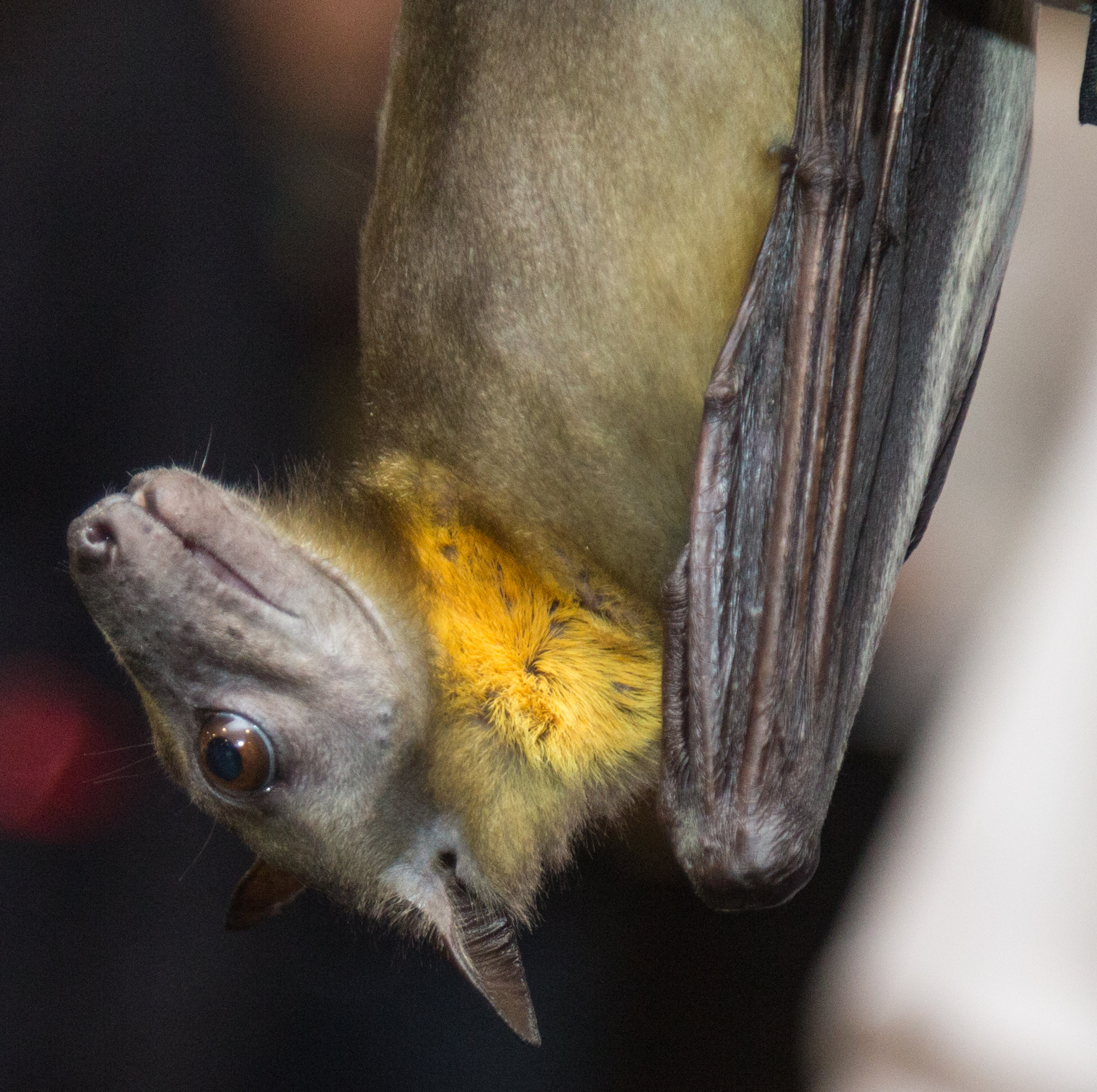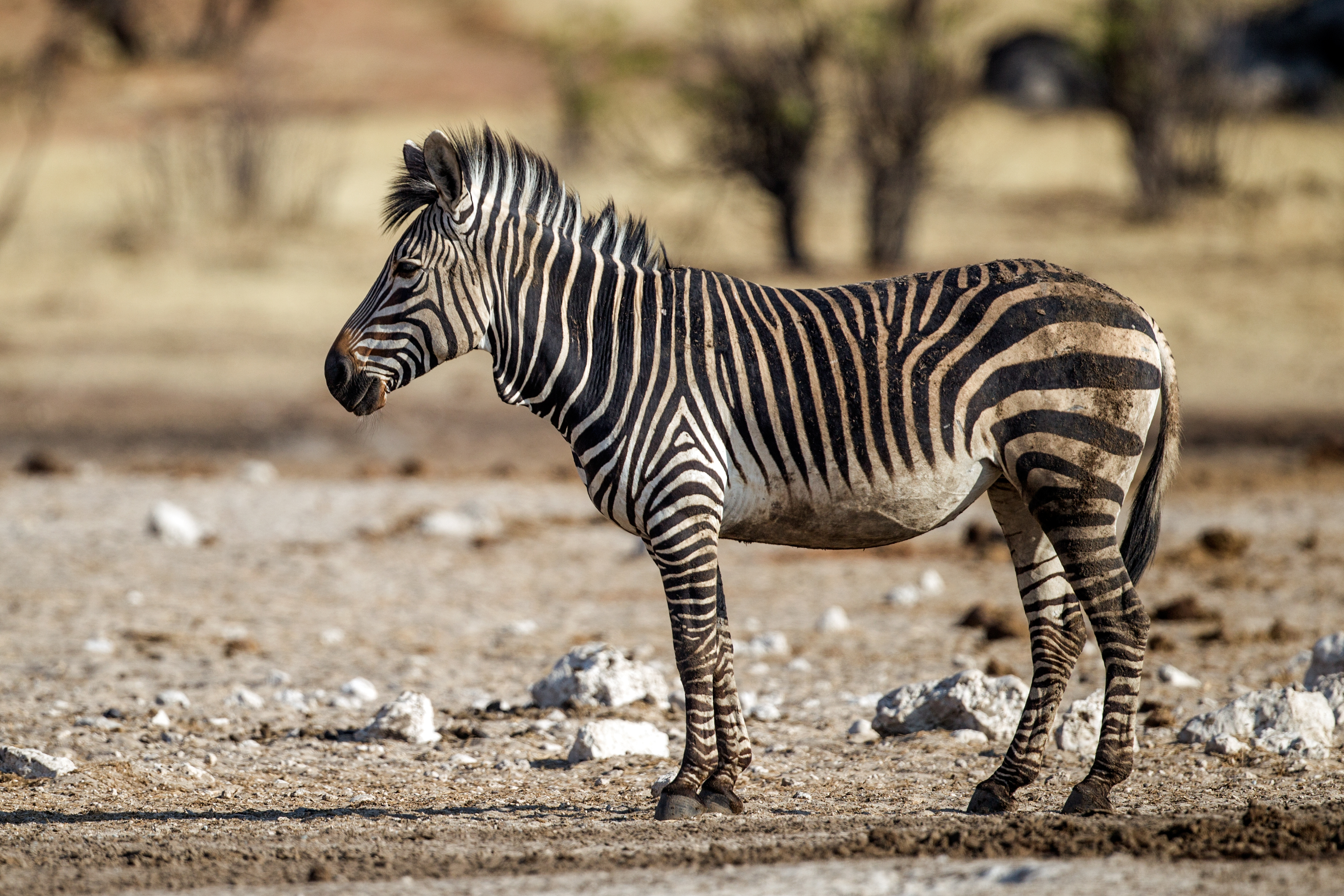Highveld Grasslands
The ecoregion’s land area is provided in units of 1,000 hectares. The protection goal is the Global Safety Net (GSN1) area for the given ecoregion. The protection level indicates the percentage of the GSN goal that is currently protected on a scale of 0-10. N/A means data is not available at this time.
Bioregion: Southeast African Subtropical Grasslands (AT8)
Realm: Afrotropics
Ecoregion Size (1000 ha):
24,256
Ecoregion ID:
81
Protection Goal:
6%
Protection Level:
6
States: Lesotho, South Africa, Swaziland
South Africa’s national bird, the blue crane, is found in the thousands in these Highveld grasslands. These tall, ground-dwelling birds are near-endemic to South Africa, with a small breeding population at Etosha Pan, Namibia. Despite their seemingly high overall numbers, many local populations are in decline. The flat, well-drained soils of the grasslands that blue cranes depend on are also ideal conditions for agriculture. The conversion of land to agriculture has resulted in high fragmentation of the cranes' habitat.

The flagship species of the Highveld Grasslands ecoregion is the blue crane.
The Highland grasslands draw their name from the high interior plateau of South Africa, known as the Highveld. Once covered by species-rich grassland habitats, the ecoregion is now largely converted to agriculture. The Highveld is relatively flat, with elevations ranging from 1,400 m to 1,800 m above sea level.
The landscape is traversed by many meandering rivers, with the grassland community historically playing an important role in the natural water purification of the westward-flowing rivers that originate on the Drakensberg Escarpment. This ecosystem process has been disrupted in many areas by water transfer projects that have been built to provide greater Johannesburg with its water supply. Relatively high rainfall maintains the grasslands during the summer months, with the mean annual rainfall between 400 and 900 mm.

Straw colored fruit bat. Image credit: Kayt Jonsson, USFWS, Creative Commons
Frequent fires, frost, and heavy grazing—formerly by wild animals and now by cattle and sheep—suppress the presence of shrubs and trees. The mean maximum temperature ranges from 21 to 24°C, and the mean minimum ranges from 3 to 6oC, with temperatures sometimes reaching 38°C in the summer and -11oC in the winter. Summer rainfall is not evenly distributed throughout the region, resulting in several different habitat types.
The vegetation of this ecoregion can be divided into three main types: Kalahari-Karoo highveld transition zone, sweet grasslands, and sour grasslands. Dominanat grass species include Panicum coloratum, Themeda trianda, Eragrostis curvula, E. lehmanniana, and Brachiaria serrata. Nongrassy forb speciesinclude Helichrysum rugulosum, Crabbea acaulis, and Rhynchosia totta.
Although highly fragmented, the Highveld contains the greatest expanse of grassland remaining in southern Africa. Analysis of pollen spores from the Winterberg Escarpment suggests that grasses have dominated the floral community since at least the early Holocene. Despite the severely degraded nature of this ecoregion, it provides the last remaining stronghold of several grassland species that have suffered major reductions in abundance in the grassland biome, such as the blue crane.
Bird species richness is relatively high within this ecoregion. However, Botha’s lark is the only strictly endemic bird species where it inhabits heavily grazed grassland. Near-endemic species include Rudd’s lark, buff-streaked chat, and yellow-breasted pipit. This ecoregion supports a high number of mammal species, although only the orange mouse is endemic.

Mountain zebra. Image credit: Yathin S Krishnappa, Creative Commons
Populations of several large mammal species, some of which are rare in southern Africa, are found. Among these are the brown hyena, ground pangolin, African striped weasel, and aardwolf. Herds of large mammals, including black wildebeest, blesbok, springbok, and white rhinoceros, used to occur here but were extirpated by early settlers. The current populations of these species have mainly been reintroduced. Relatively few reptile species occur, although there is one strictly endemic species—the giant spinytail lizard.
These grasslands have already suffered extensive transformation. Because this is one of the best farming areas in South Africa, large tracts of land were converted to agriculture decades ago, mainly for maize production. The ecoregion is particularly threatened by overgrazing because the grasslands are slow to recover. Urban expansion, fire, and overgrazing have led to increased fragmentation, as has coal mining and afforestation with exotic trees, particularly Eucalyptus species. Planted black wattle has become invasive and is prone to rapid expansion along rivers. Habitat loss from gold mining and acid mine drainage are also threats here.
-CC-Charles%20J%20Sharp-2016_resized.jpg)
Nile monitor lizard. Image credit: Charles J Sharp, Creative Commons
Most of the near-pristine grassland that remains in this ecoregion is found in nature reserves. The main protected areas are Valei, Nooitgedacht Dam, Willem Pretorius, Rustfontein Dam, Koppies, and the Ermelo Nature Reserve. Outside of the reserves, even those areas of grassland that have remained in a near-natural state are declining steadily in area and quality. The present state of habitat fragmentation, together with anthropogenic changes predicted for the coming years, may lead to the extinction or near-extinction of some larger animal species, such as the blue crane. Part of the ecoregion falls within the Magaliesberg Biosphere Reserve and Mountain Zebra National Park.
Priority conservation actions for the next decade
- Establish protected areas that create corridors to other protected or natural areas.
- Implement rotational grazing systems for commercial animals to prevent overgrazing
- Restore degraded ecosystems, including eradicating invasive species.
-
-
1. Burgess, N., Hales, J.A., Underwood, E., Dinerstein, E., Olson, D., Itoua, I., Schipper, J., Ricketts, T. and Newman, K. 2004. Terrestrial ecoregions of Africa and Madagascar: a conservation assessment. Island Press.
2. McCann, K., Theron, L.J. and Morrison, K. 2007. Conservation priorities for the Blue Crane (Anthropoides paradiseus) in South Africa—the effects of habitat changes on distribution and numbers. Ostrich-Journal of African Ornithology. 78 (2), pp.205-211.
3. Government of South Africa. 2015. South Africa’s 2nd National Biodiversity Strategy and Action Plan 2015-2025. Pretoria, South Africa: Department of Environmental Affairs.
4. Cadman, M., de Villiers, C., Lechmere-Oertel, R., McCulloch, D. and South African National Biodiversity Institute. 2013. Grasslands Ecosystem Guidelines: Landscape interpretation for planners and managers. Pretoria: South African National Biodiversity Institute (SANBI). -
Cite this page: Highveld Grasslands. Ecoregion Snapshots: Descriptive Abstracts of the Terrestrial Ecoregions of the World, 2021. Developed by One Earth and RESOLVE. https://www.oneearth.org/ecoregions/highveld-grasslands/
-



